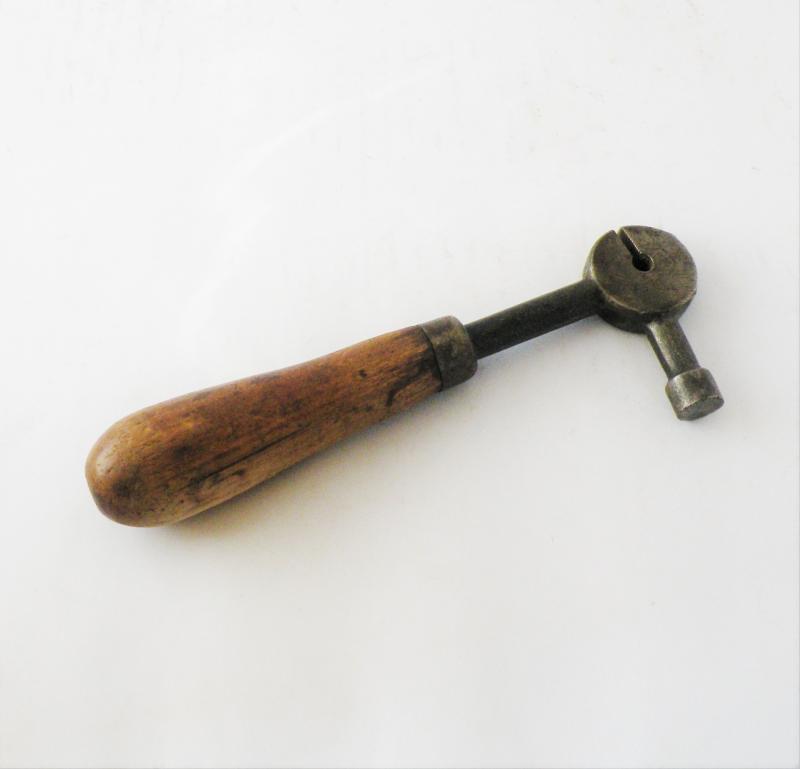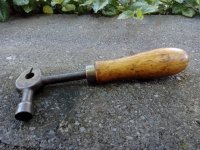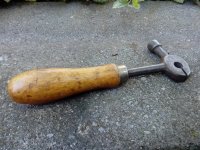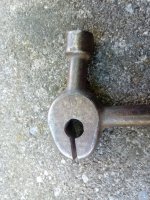Can You Identify This Tool?
- Thread starter mikethompson
- Start date
You are using an out of date browser. It may not display this or other websites correctly.
You should upgrade or use an alternative browser.
You should upgrade or use an alternative browser.
SmokingPipes.com Updates
Watch for Updates Twice a Week
- Status
- Not open for further replies.
Maybe for bending thin metal work like roofing or siding?
It's an old-fashioned tooth puller.
Not a popular design by any measure. Which is why you don't too many of them around.....
Not a popular design by any measure. Which is why you don't too many of them around.....
Judging by the handle I'm guessing it was not meant to be swung or levered. Maybe the tool was held in place while being whacked with a hammer?
Seems like the consensus answer. Initially I thought it was for putting in tacks on upolstery.I’d guess a sheet metal seaming/jointing tool, probably for tin roofs.
Bend a 90 degree flange on the edge of two sheets, overlap the flanges then hammer them over to lock.
That or the world’s worst soup spoon.
Thank you all for your help!
My guess is similar to some other's guesses ^^^^^.
Just speculation:
The thin slot is probably for twisting, bending, sheet metal?, and the hammer end + the short handle probably was used for light knocking/adjusting-by-tapping (metal). I think roofing-tar used to come in metal buckets that had earlike-tabs around the circumference of the lid that had to be bent up before the lids could be removed from the top of the tar bucket. The hammer end of this old tool could be used to tap/bang the tar-bucket lids shut, and the slot-end used for re-bending down those same lid-tabs, for a secure closing.
Other than purely guessing, I have no clue. But, by the looks of that thing, it was made and probably used exclusively, for doing a dedicated, very specific task.
Just speculation:
The thin slot is probably for twisting, bending, sheet metal?, and the hammer end + the short handle probably was used for light knocking/adjusting-by-tapping (metal). I think roofing-tar used to come in metal buckets that had earlike-tabs around the circumference of the lid that had to be bent up before the lids could be removed from the top of the tar bucket. The hammer end of this old tool could be used to tap/bang the tar-bucket lids shut, and the slot-end used for re-bending down those same lid-tabs, for a secure closing.
Other than purely guessing, I have no clue. But, by the looks of that thing, it was made and probably used exclusively, for doing a dedicated, very specific task.
For those who do not want to click on the link.
Hammer Highlight: Saw Setting and Swaging Hammer

Saw blades are not as straight as one may think. It is actually necessary for the blade of a saw to be set at a slight angle. A small curve in the saw’s teeth prevents the blade from getting stuck in the log it is cutting into. If a saw blade was straight it would only cut enough space for itself, not leaving enough room to remove the tool.
An established saw manufacturer, the Symonds Manufacturing Company, developed many saws and saw working implements. This saw set was one of many designed by the company to adjust the angle of the blade and improve its function. The clamp portion of the hammer seen here was used to wrench the saw teeth, giving the blade a set. The hammer head was used for swage. Swage is the squashing of the saw teeth to broaden the width of the cut.
"That's for a pretty good sized saw!"
How can you tell John, there is no scale to compare it with.
Regards,
Jay.
How can you tell John, there is no scale to compare it with.
Regards,
Jay.
Damn I feel stupid. That makes so much sense.
- Status
- Not open for further replies.









